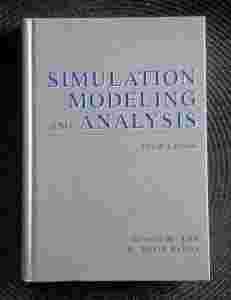|
Simulation Modeling and Analysis
The goal of this third edition of Simulation Modeling and Analysis remains the same as for the first two editions: To give a comprehensive and state-of-the-art treatment of all the important aspects of a simulation study, including modeling, simulation software, model verification and validation, input modeling, random-number ; generators, generating random variates and processes, statistical design and analy-'sis of simulation experiments, and to highlight major application areas such as manufacturing. The book strives to motivate intuition about simulation and modeling, as 'well as to present them in a technically correct yet clear manner. There are many examples and problems throughout, as well as extensive references to the simulation and related literature for further study.
The book can serve as the primary text for a variety of courses; for example:
A first course in simulation at the junior, senior, or beginning-graduate-student , level in engineering, manufacturing, business, or computer science (Chaps. 1 i through 4, and parts of Chaps. 5 through 9). At the end of such a course, the stu-i dent will be prepared to carry out complete and effective simulation studies, and to take advanced simulation courses.
A second course in simulation for graduate students in any of the above disciplines (most of Chaps. 5 through 12). After completing this course, the student , should be familiar with the more advanced methodological issues involved in a simulation study, and should be prepared to understand and conduct simulation . research.
An introduction to simulation as part of a general course in operations research or management science (parts of Chaps. 1, 3, 5, 6, and 9). |

